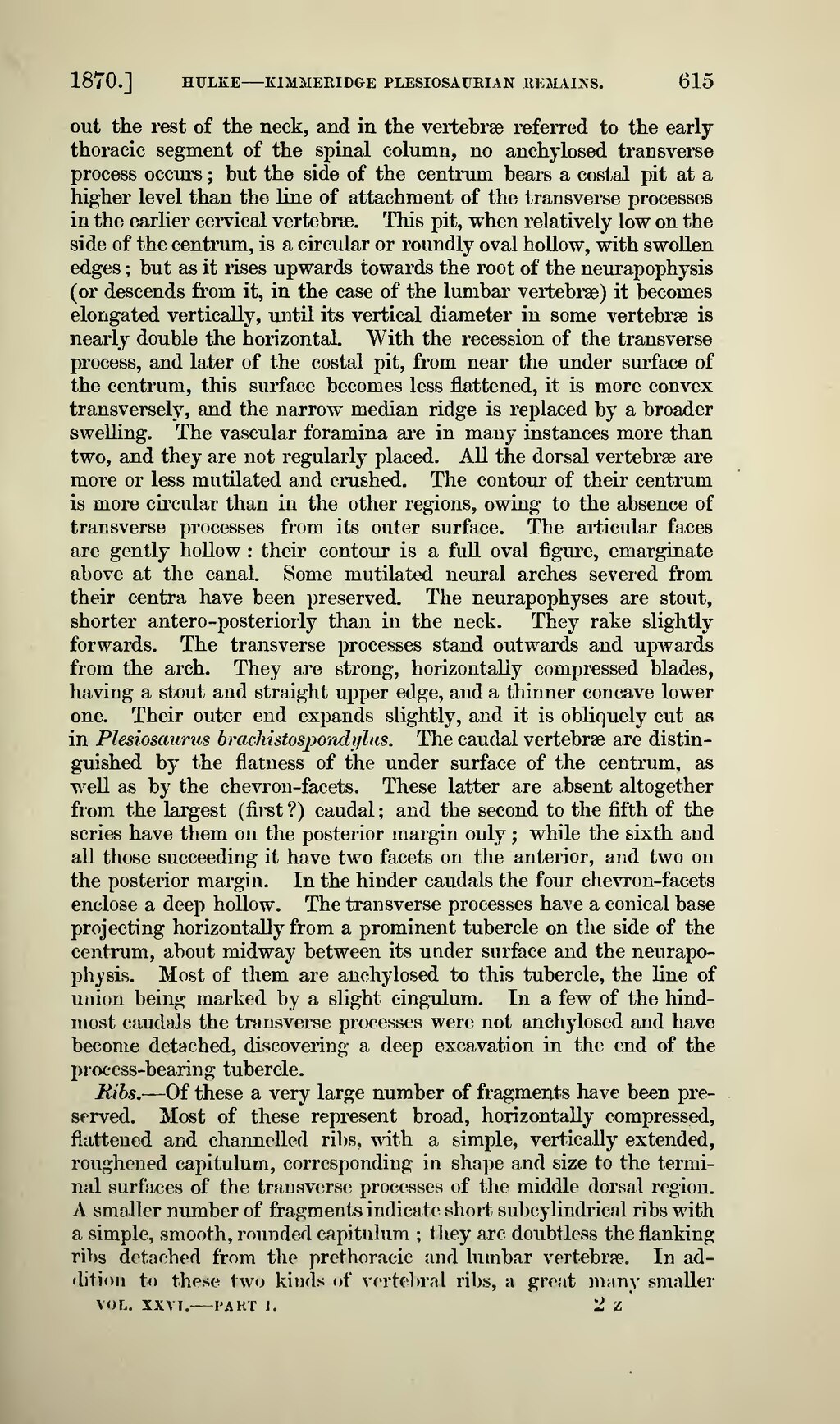out the rest of the neck, and in the vertebrae referred to the early thoracic segment of the spinal column, no anchylosed transverse process occurs ; but the side of the centrum bears a costal pit at a higher level than the line of attachment of the transverse processes in the earlier cervical vertebrae. This pit, when relatively low on the side of the centrum, is a circular or roundly oval hollow, with swollen edges ; but as it rises upwards towards the root of the neurapophysis (or descends from it, in the case of the lumbar vertebrae) it becomes elongated vertically, until its vertical diameter in some vertebrae is nearly double the horizontal. With the recession of the transverse process, and later of the costal pit, from near the under surface of the centrum, this surface becomes less flattened, it is more convex transversely, and the narrow median ridge is replaced by a broader swelling. The vascular foramina are in many instances more than two, and they are not regularly placed. All the dorsal vertebrae are more or less mutilated and crushed. The contour of their centrum is more circular than in the other regions, owing to the absence of transverse processes from its outer surface. The articular faces are gently hollow : their contour is a full oval figure, emarginate above at the canal. Some mutilated neural arches severed from their centra have been preserved. The neurapophyses are stout, shorter antero-posteriorly than in the neck. They rake slightly forwards. The transverse processes stand outwards and upwards from the arch. They are strong, horizontally compressed blades, having a stout and straight upper edge, and a thinner concave lower one. Their outer end expands slightly, and it is obliquely cut as in Plesiosaurus brachistospondylus. The caudal vertebrae are distinguished by the flatness of the under surface of the centrum, as well as by the chevron-facets. These latter are absent altogether from the largest (first ?) caudal ; and the second to the fifth of the series have them on the posterior margin only ; while the sixth and all those succeeding it have two facets on the anterior, and two on the posterior margin. In the hinder caudals the four chevron-facets enclose a deep hollow. The transverse processes have a conical base projecting horizontally from a prominent tubercle on the side of the centrum, about midway between its under surface and the neurapophysis. Most of them are anchylosed to this tubercle, the line of union being marked by a slight cingulum. In a few of the hindmost caudals the transverse processes were not anchylosed and have become detached, discovering a deep excavation in the end of the process-bearing tubercle.
Ribs. — Of these a very large number of fragments have been preserved. Most of these represent broad, horizontally compressed, flattened and channelled ribs, with a simple, vertically extended, roughened capitulum, corresponding in shape and size to the terminal surfaces of the transverse processes of the middle dorsal region. A smaller number of fragments indicate short subcylindrical ribs with a simple, smooth, rounded capitulum ; they are doubtless the flanking ribs detached from the prethoracic and lumbar vertebrae. In addition to these two kinds of vertebral ribs, a great many smaller
VOL. XXVI. PART i. 2 z
